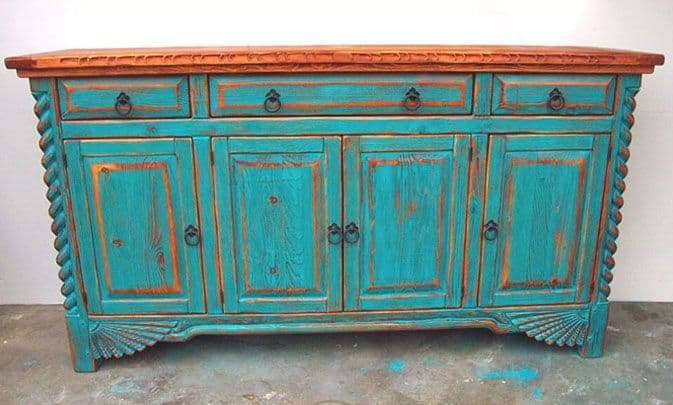King-size comforters are growing ever so popular for offering a feeling of snuggling in luxury, even for beds smaller than king size. However, they can be challenging to clean simply because they are quite huge and heavy, thus seem to not fit easily in a regular capacity washer. That said, modern washing machines are coming with larger capacities, meaning you no longer need to take a trip to the local laundromat to wash your king-size comforter.
Can You Wash a King-Size Comforter in a Washing Machine?
Yes! Ideally, you need a large capacity washing machine that holds at least 3.7 cubic feet to safely handle washing a king-size comforter. It's best not to put anything else in the machine when you're washing the comforter. So, what is your best option for what size washer for king comforter?
Front Loading or Top Loading Washer?
For large capacity washing machines, it all trickles down to choosing between a front loading washer and a top load washer. Each kind has its pros and cons, so what works best varies from one individual to another. Let's look at what each has to offer:
1. Front Load Washer
This type has a front opening where you insert your load.
Pros:
Cons:
2. Top Load Washer
This type comes with a top opening to load your laundry.
Pros:
Cons:
The most important thing to consider is tub size when choosing a washing machine that can let you wash your king-size comforter. However, you have to consider a comforter holds A LOT of water when washing, which can cause excessive strain on the motor. This can either shorten or end the life span of a top-loading washer.
What Is The Best washer For A king size comforter?
Your ideal option is a large-capacity front-loading washing machine. These models typically have bigger drums that can accommodate a higher laundry capacity. Furthermore, they don't feature an agitator in the center like top-loading units that can ruin large comforters and bulkier blankets. Over time, the water and electricity savings costs will set off the higher price tag.
Plus, a front-load washing machine tends to damage laundry less hence your clothes last longer. If your king-size comforter fit has a lightweight to medium tog, a 3.7 cubic feet washing machine should get the job done. However, if you have a winter king comforter with a higher tog, you'll need a larger capacity model with at least 4.2 cubic feet.
1. BLACK+DECKER 4.1 Cu. Ft. Top Loading Washing Machine
I needed a no-fuss, reliable washer that could handle everyday loads without overcomplicating things, and this BLACK+DECKER top-loader turned out to be exactly that. First off, the design is sleek but practical—the glass lid is a nice touch, letting me peek inside without pausing the cycle. The stainless steel tub feels solid, and the agitator does a thorough job of getting clothes clean. I also appreciate the simple LED display, which makes it easy to pick between the 10 different wash cycles without feeling like I’m programming a spaceship.
In terms of performance, it’s efficient without wasting a ton of water, and it’s surprisingly quiet for a top-loader. The agitator really works to lift dirt, and my clothes come out fresh every time. Another plus: it runs on a standard 120V outlet, so installation was painless.
The only things to keep in mind—there’s no built-in water heater, so if you need hot water, you’ll have to rely on your home’s supply. And while 4.1 cu. ft. is a solid size, it might struggle with bulky bedding like comforters. If you need a washer that’s easy to use, efficient, and doesn’t require a degree in appliance science, this is a solid pick.
Pros:
Cons:
2. KoolMore Large Capacity Washer + Dryer Bundle
I needed a washer and dryer set that could handle big loads without completely taking over my laundry space, and the KoolMore 4.5 Cu. Ft. Front Load Washer + 8 Cu. Ft. Front Load Dryer has been a solid pick. The washer has plenty of room for everyday laundry plus bulkier stuff like blankets and towels, which means fewer loads (a definite win). I also love that it has a quick wash cycle for those times when I just need to freshen something up fast. The stainless steel drum feels sturdy, and it’s surprisingly quiet thanks to the inverter motor—which I appreciate since my laundry area isn’t exactly far from where I spend most of my time.
The dryer is just as solid, with its 8 Cu. Ft. capacity making it easy to dry bigger loads without everything getting tangled up. It runs on 240V, so things dry fast without cranking up the energy bill. I like that there are different heat settings to keep delicate fabrics from shrinking (because, let’s be real, accidentally shrinking a favorite shirt is the worst). It also does a good job of keeping wrinkles at bay, which means I don’t have to iron as much—a huge plus. And on top of all that, the sleek, modern design makes my laundry setup look way more put together.
A couple of things to keep in mind: The dryer needs a 240V outlet, so depending on your home, you might need to check if it’s compatible. Also, like most front-load washers, I have to leave the door open after each wash to prevent that musty smell from creeping in. But overall, this set has made laundry day a lot easier and way less of a hassle. If you need something high-capacity, efficient, and not an eyesore, this is a great option. Plus, this model is simple to clean and maintain.
Pros:
Cons:
3. Kenmore 4.5 Cu. Ft. Front-Load Washing Machine
This Kenmore front-load washer has been a total workhorse in my laundry routine. The 4.5 cu. ft. capacity is fantastic for handling large loads—no more stuffing clothes into an undersized drum and hoping for the best. It easily handles comforters and bulky items without breaking a sweat.
A couple of standout features: the Accela-Wash cycle is a lifesaver when I’m in a rush, cutting down washing time without sacrificing cleanliness. And the steam function? Amazing. It freshens fabrics and works wonders on stains, which means fewer rewashes and less scrubbing. Bonus points for being ENERGY STAR certified—it’s efficient without guzzling water or running up the electricity bill.
The controls are user-friendly, the express cycle is great for quick loads, and despite its power, it runs quietly. The only minor gripes? Like most front-loaders, you’ll want to leave the door open after each wash to prevent any musty odors. And while it’s easy to use, there’s a bit of a learning curve if you want to take full advantage of all the settings. But if you’re looking for a spacious, high-performing front-loader with premium features, this one’s a great choice.
Pros:
Cons:
Tips for Machine Washing King Size Comforters
1. Read Care Label
Reading the care label before attempting to wash your king comforter tells you if it's suitable for washing a home. Machine washing delicate materials such as silk or wool can cause damage or shrinkage, therefore requiring a trip to the dry cleaners. The care label also specifies the temperature setting required to wash the comforter to avoid causing irreversible damage.
2. Wash Individually
Always wash your king- or queen-size comforter by itself. A comforter required adequate space to allow the detergent and water to penetrate all the material sufficiently.
3. Treat Stains
If the comforter has any stains, you must treat them with an anti-stain formula before adding the bedding to the washer. Follow the manufacturer's directions to do this correctly.
4. Use Gentle Detergent
To prolong your king comforter's lifespan, it would be best to use a mild detergent. These are usually more gentle on fabrics, allowing the colors to remain vibrant and the material to stay softer for longer.
5. Select Correct Washing Setting
If the care label doesn't indicate the ideal temperature setting, a gentle or delicate cycle with an extra rinse is usually the best choice for washing your comforter. Cool or warm water is more appropriate for protecting fabrics and colors. However, if you are worried about mites, wash your comforter in a hot setting to wipe them out.
6. Use Fabric Conditioner
Using a fabric conditioner helps keep the comforter soft while also giving it a lasting, pleasant fragrance. This is particularly crucial if you don't intend to dry it in a tumble dryer. Line-dried laundry tends to develop a tough or stiff texture without a fabric conditioner.
Frequently Asked Questions (FAQs) on Washing Machine for King-Size Comforter
1. How often should you machine wash your heavy comforter?
Thick, heavy comforters don't usually need frequent washings—cleaning once or twice a year before storing for the off-season should be enough.
2. How to dry a king-size comforter?
Hanging the comforter outside on the line to dry is always a good option if the weather is appropriate. This is even better for pale-colored comforters because the sun can bleach any stains and restore bright white fabrics.
If you have a clothes dryer with sufficient capacity, it would be a good idea to throw your comforter in after it has dried on the hanging line. The dryer fluffs up the comforter, giving it a more plush feel.
When there's cold or wet weather, we recommend moving your comforter right from the large capacity machine to the dryer. You can consider adding a few tennis balls in the dryer to ensure your comforter dries more evenly since the balls ensure the filling is evenly distributed. If you don't have tennis balls, you'll need to pause the dryer every half hour and shake the comforter out to spread the filling.














